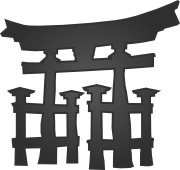Tips and Tricks¶
This part of the documentation shows some tips and tricks for Jinja templates.
Null-Master Fallback¶
Jinja supports dynamic inheritance and does not distinguish between parent and child template as long as no extends tag is visited. While this leads to the surprising behavior that everything before the first extends tag including whitespace is printed out instead of being ignored, it can be used for a neat trick.
Usually child templates extend from one template that adds a basic HTML skeleton. However it’s possible to put the extends tag into an if tag to only extend from the layout template if the standalone variable evaluates to false which it does per default if it’s not defined. Additionally a very basic skeleton is added to the file so that if it’s indeed rendered with standalone set to True a very basic HTML skeleton is added:
{% if not standalone %}{% extends 'master.html' %}{% endif -%}
<!DOCTYPE HTML PUBLIC "-//W3C//DTD HTML 4.01 Transitional//EN">
<title>{% block title %}The Page Title{% endblock %}</title>
<link rel="stylesheet" href="style.css" type="text/css">
{% block body %}
<p>This is the page body.</p>
{% endblock %}
Alternating Rows¶
If you want to have different styles for each row of a table or list you can use the cycle method on the loop object:
<ul>
{% for row in rows %}
<li class="{{ loop.cycle('odd', 'even') }}">{{ row }}</li>
{% endfor %}
</ul>
cycle can take an unlimited amount of strings. Each time this tag is encountered the next item from the list is rendered.
Accessing the parent Loop¶
The special loop variable always points to the innermost loop. If it’s desired to have access to an outer loop it’s possible to alias it:
<table>
{% for row in table %}
<tr>
{% set rowloop = loop %}
{% for cell in row %}
<td id="cell-{{ rowloop.index }}-{{ loop.index }}">{{ cell }}</td>
{% endfor %}
</tr>
{% endfor %}
</table>
